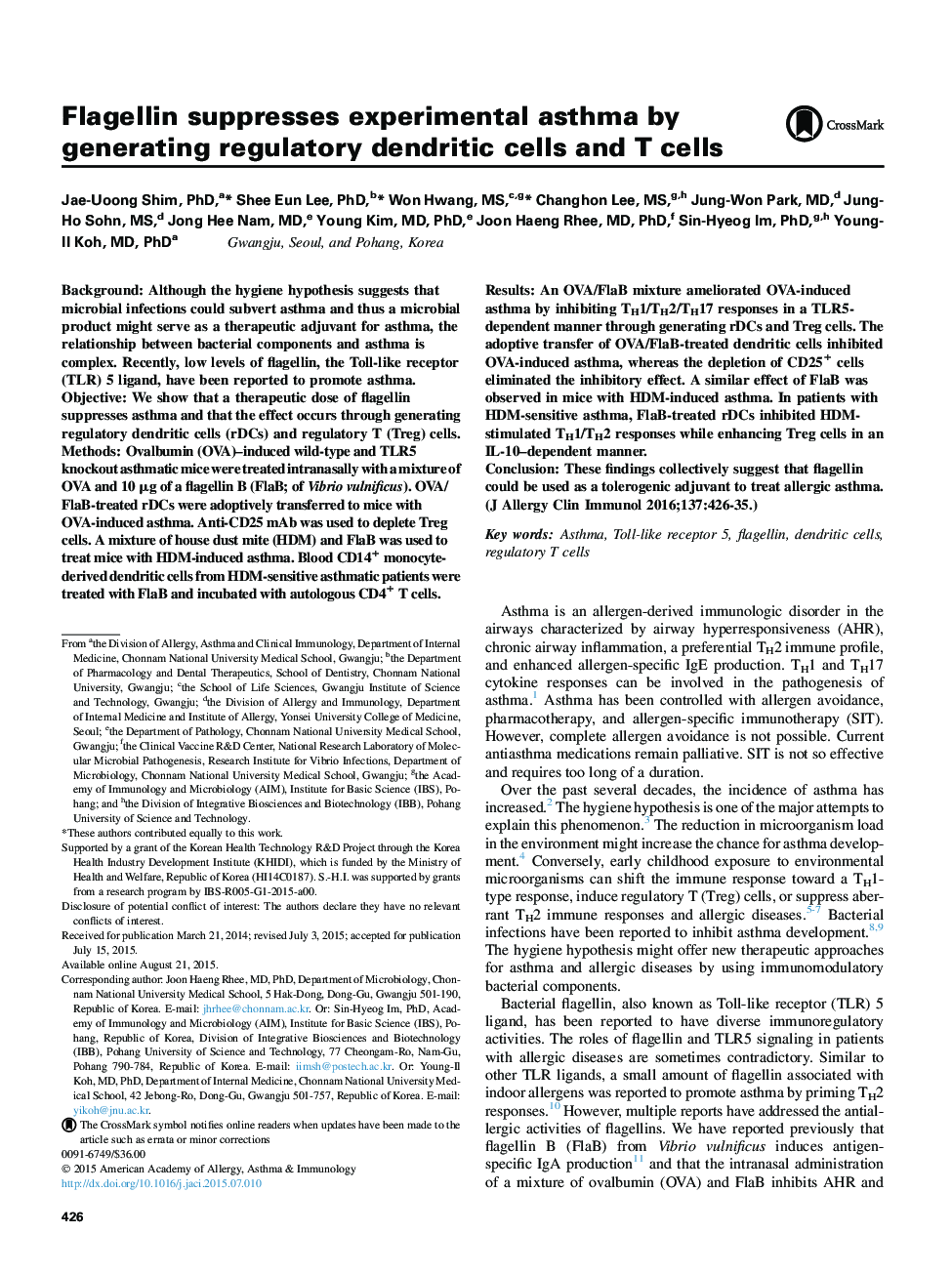| Article ID | Journal | Published Year | Pages | File Type |
|---|---|---|---|---|
| 6063609 | Journal of Allergy and Clinical Immunology | 2016 | 10 Pages |
BackgroundAlthough the hygiene hypothesis suggests that microbial infections could subvert asthma and thus a microbial product might serve as a therapeutic adjuvant for asthma, the relationship between bacterial components and asthma is complex. Recently, low levels of flagellin, the Toll-like receptor (TLR) 5 ligand, have been reported to promote asthma.ObjectiveWe show that a therapeutic dose of flagellin suppresses asthma and that the effect occurs through generating regulatory dendritic cells (rDCs) and regulatory T (Treg) cells.MethodsOvalbumin (OVA)-induced wild-type and TLR5 knockout asthmatic mice were treated intranasally with a mixture of OVA and 10 μg of a flagellin B (FlaB; of Vibrio vulnificus). OVA/FlaB-treated rDCs were adoptively transferred to mice with OVA-induced asthma. Anti-CD25 mAb was used to deplete Treg cells. A mixture of house dust mite (HDM) and FlaB was used to treat mice with HDM-induced asthma. Blood CD14+ monocyte-derived dendritic cells from HDM-sensitive asthmatic patients were treated with FlaB and incubated with autologous CD4+ T cells.ResultsAn OVA/FlaB mixture ameliorated OVA-induced asthma by inhibiting TH1/TH2/TH17 responses in a TLR5-dependent manner through generating rDCs and Treg cells. The adoptive transfer of OVA/FlaB-treated dendritic cells inhibited OVA-induced asthma, whereas the depletion of CD25+ cells eliminated the inhibitory effect. A similar effect of FlaB was observed in mice with HDM-induced asthma. In patients with HDM-sensitive asthma, FlaB-treated rDCs inhibited HDM-stimulated TH1/TH2 responses while enhancing Treg cells in an IL-10-dependent manner.ConclusionThese findings collectively suggest that flagellin could be used as a tolerogenic adjuvant to treat allergic asthma.
